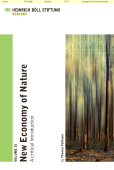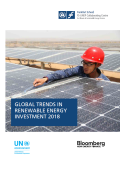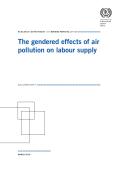
This essay Life Beyond Capital forms part of a series within the work programme of the Centre for the Understanding of Sustainable Prosperity, investigating the philosophical understandings of sustainable prosperity.

The publication New Economy of Nature provides a readily understandable introduction to the subject and illuminates the concepts and instruments that follow from the idea of monetarizing nature.

The report Global Trends in Renewable Energy Investment 2018 finds that falling costs for solar electricity, and to some extent wind power, is continuing to drive deployment.

Economic diversification could reduce many developing countries' vulnerabilities to climate change measures, by broadening their export basket beyond goods and services from the sectors that may be most affected, such as energy, tourism and agriculture. This paper, Climate Policies, Economic Diversification and Trade, explores two broad areas of policy that may hold some promise, including the global value chains and green industrial policy.

This paper, The Gendered Effects of Air Pollution on Labour Supply ,draws on 20 years of systematic data collection on employment and air pollution to explore the link between air pollution and labour supply.
